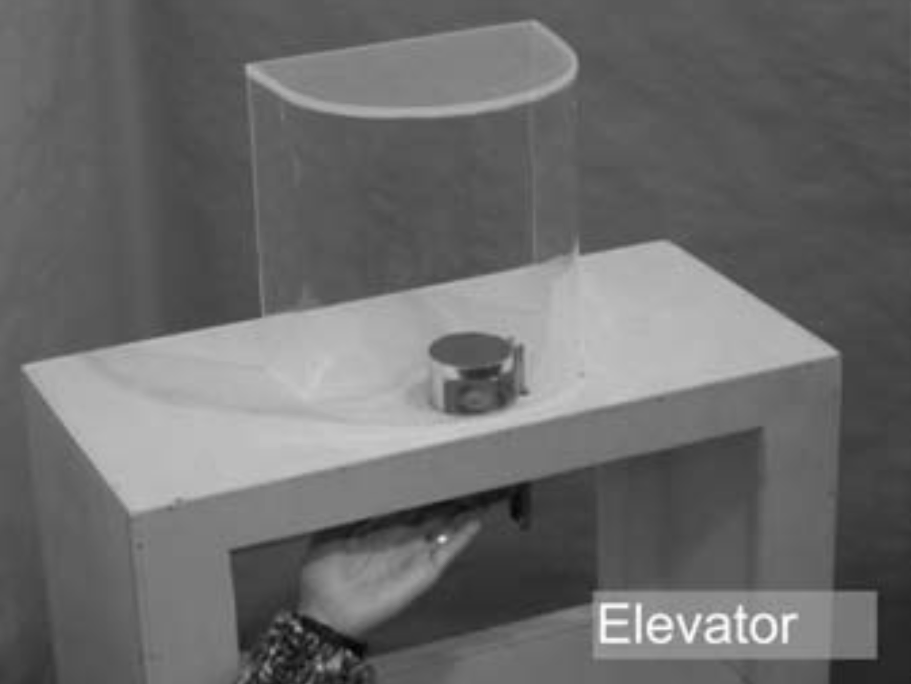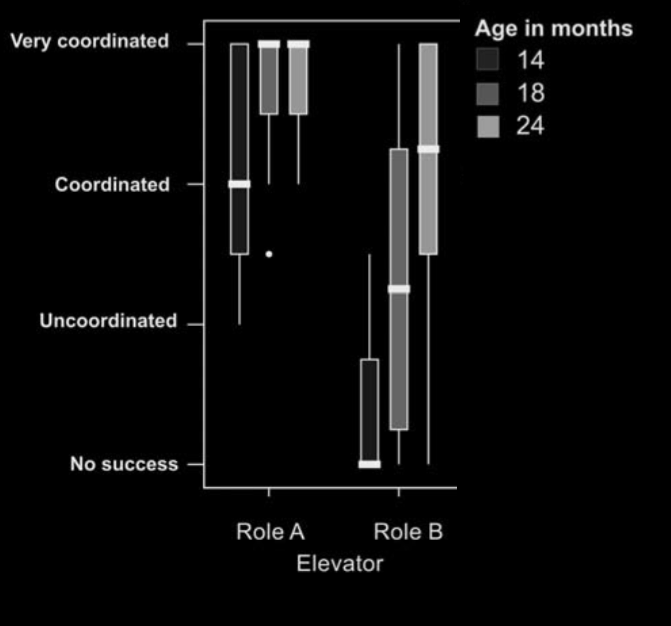Methods: still face; replay (infants detect whether caregiver reacts, so are
less satisifed with a replay).
\citet[p.~196]{brownell:2011_early} comment: ‘infants become progressively
tuned to the timing and structure of dyadic exchange’
6-12 months
triadic interactions
\citet[p.~197]{brownell:2011_early} comment:
‘adult-infant dyadic interactions expand to include objects, events, and
individuals outside of the dyad (Moore and Dunham 1995)’
~ 12-24 months
infants initiate and re-start joint actions
e.g. ‘peek-a-boo; tickle; rhythmic games; chase’
Brownell, 2011
\citet[p.~197]{brownell:2011_early} comment:
‘Eventually, infants begin themselves to initiate joint action with
adults and to respond in unique ways when adults violate their
expectations for participation in the joint activity. For example, if a
parent becomes distracted during peek-a-boo and fails to take her turn,
12-month olds may try to re-start the game by vocalizing to the adult or
by re- enacting a well-rehearsed part of the game such as placing the
cloth over their own face and waiting. One-year olds also begin to point
to interesting sights and events to share their interest and affect and
they expect adults to respond appropriately by looking (Liszkowski, et al
2006).’
‘infants learn about cooperation by participating in joint action
structured by skilled and knowledgeable interactive partners before they
can represent, understand, or generate it themselves. Cooperative joint
action develops in the context of dyadic interaction with adults in which
the adult initially takes responsibility for and actively structures the
joint activity and the infant progressively comes to master the
structure, timing, and communications involved in the joint action with
the support and guidance of the adult. ... Eager participants from the
beginning, it takes approximately 2 years for infants to become
autonomous contributors to sustained, goal-directed joint activity as
active, collaborative partners’
\citep[p.~200]{brownell:2011_early}.
‘Without the structure and scaffolding provided by the expert adult
partner, 1-year-old children are unable to generate and sustain joint
action with each other in the service of an external goal. By age two,
however, they can do so readily, even with unfamiliar agemates and on
novel, unfamiliar tasks’
\citep[p.~204]{brownell:2011_early}.

